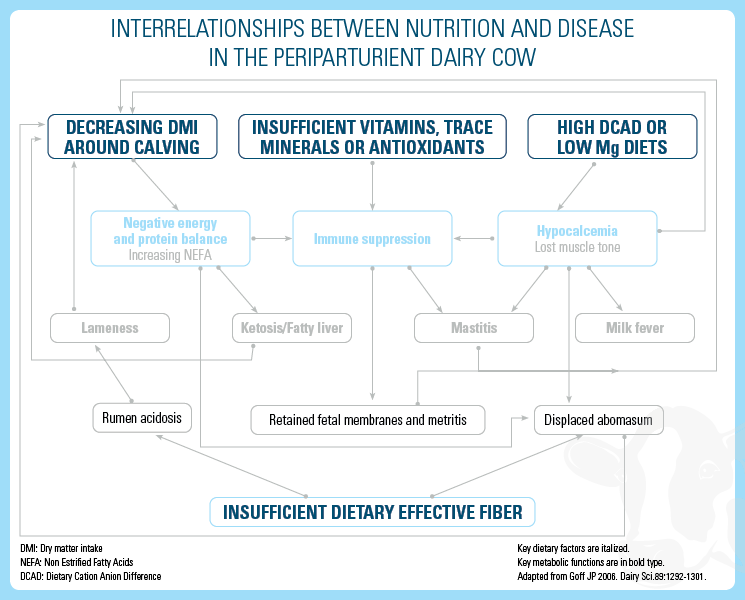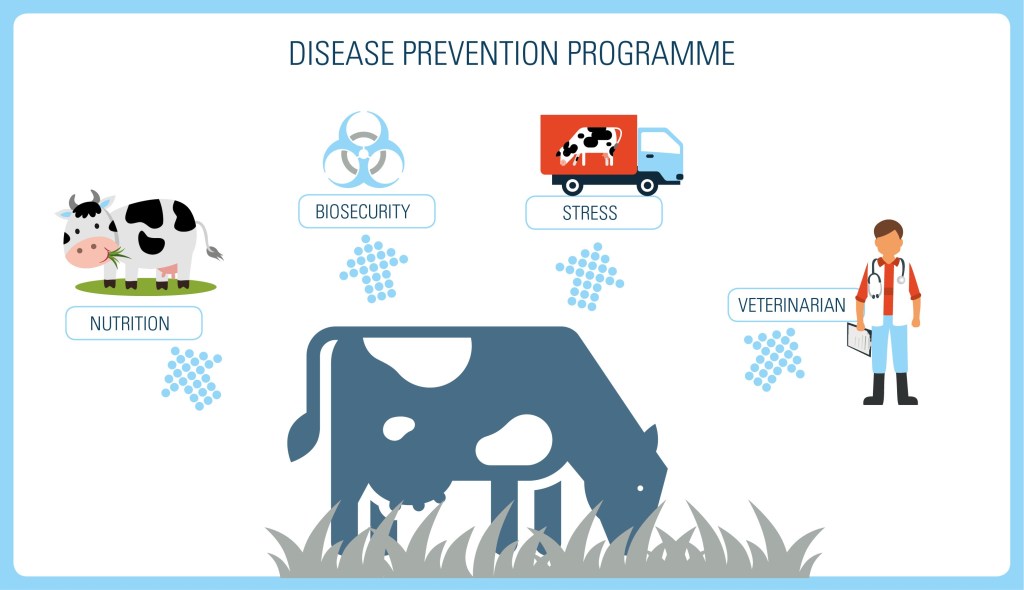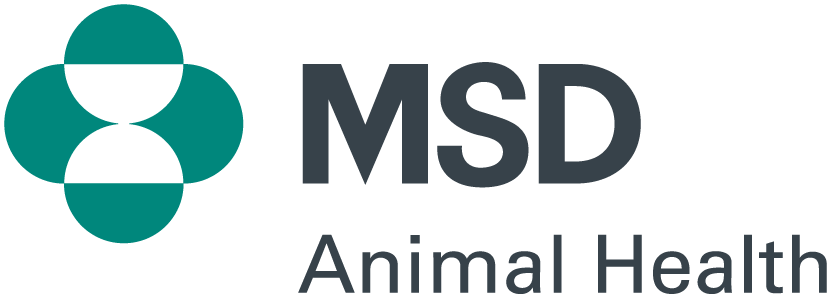

Disease Prevention
Controlling disease introduction and spread on a cattle farm is the main objective of a dairy cattle health program. The most significant advances over the last 25 years were shifts to disease prevention rather than treatment.
Many factors contribute to immune suppression in dairy cattle and can lead to an increase in infectious disease and premature culling. This results in a significant production-cost increase and a decrease in the profitability of dairy farming.
Diseases affect dairy cow productivity by decreasing reproductive efficiency, shortening the expected length of the cows’ productive lives and lowering their milk production.
A recent study suggested that, compared with healthy cows, those presenting with dystocia, metritis or clinical endometritis were 50 to 63% less likely to continue ovarian cyclicity by the end of the voluntary waiting period (VWP) and 25 to 38% less likely to become pregnant following the first artificial insemination postpartum1.
Cows with dystocia or clinical endometritis were 67 and 55% more likely, respectively, to suffer pregnancy loss during the first 60 days of gestation when compared to healthy cows. Researchers have observed similar results in dairy cows kept in grazing systems – cows with metritis had 2.7-fold increased risk of being anovular 50 days postpartum compared with their unaffected herd mates1.
These data suggest that maintaining the metabolic health of dairy cows minimizes their risk of reproductive diseases and likely benefits their fertility. Twinning, dystocia, stillbirth, abortion and retained placenta and metritis are the most common reproductive problems that affect dairy cows.
Periparturient events such as clinical mastitis2, ketosis and lameness are also associated with decreased reproductive performance:
- Decreased pregnancy rates
- Aberrations in the estrus cycle
- Early embryonic mortality or abortions
- Prolonged days open
- Higher number of services per conception
- Decreased conception rate

Figure 1. Interrelationships between nutrition and disease in the periparturient dairy cow. Key dietary factors are italicized, and key metabolic functions are in bold type3. Adapted from Goff, J.P. 2006. Major Advances in Our Understanding of Nutritional Influences on Bovine Health. J. Dairy Sci. 89:1292–1301.
Infectious Causes of Reproductive Disorders in Cattle:

Maintaining the general health and immune function of cattle is essential for minimizing the risk of herd health problems.
One should take a holistic approach that includes vaccination, optimal management practices and biosecurity to cope with the negative effects associated with reproductive and health problems in dairy cattle.
It is essential to implement a program to manage the risk factors for dairy cow disease introduction and spread (which contribute to sub-optimal vaccination immune responses)4.

Disease Management
Nutrition plays a key role in optimizing immunity and helping animals to mount an appropriate response to vaccination. The animal’s basic energy, protein, macronutrient and micronutrient requirements should be met to ensure it can properly respond to a bovine disease challenge.
Stress reduction is very important for minimizing disturbances in body homeostasis, an important factor in fighting most infectious cattle diseases5. Pay special attention to these factors to reduce stress:
- Transport
- Commingling of animals
- Handling
- The provision of feed and water
- Housing (space and ventilation)
Dairy Herd Veterinarians
The herd veterinarian has a central role in the herd health program by providing his or her knowledge and experience in this area5.
Biosecurity
Biosecurity includes a set of measures designed to prevent infectious diseases from entering and spreading through a cattle herd.
Benefits of an effective biosecurity program include:
- Optimized animal health and welfare
- Improved productivity and end-product value
Three major components:

Biosecurity can help to prevent or minimize cross-contamination between animals, feed and equipment when effectively managed.
Artificial Insemination
Artificial Insemination (AI) is a great way to help prevent the spread of disease throughout your operation. With sterile equipment, producers can rest easy knowing their cattle are getting bred safely without the exposure of natural dangers. Most of the time, bulls are tested for different genetic diseases before an A.I. company enrolls them into their programs. With A.I., there is little risk of transferring diseases and producers not only improve the genetics of their herd but the overall herd health as well.
Vaccinations
Vaccination is the most useful measure available for preventing infectious diseases and improving dairy cattle health and productivity.
Benefits of vaccination include:
- Increase in immunity
- Reduced disease spread and impact
- Disease eradication
- Bisinotto RS, Greco LF, Ribeiro ES, Martinez N, Lima FS, Staples CR, Thatcher WW, Santos JEP. 2012. Influence of metabolism and nutrition on fertility of dairy cows. Anim Reprod, v.9, n.3, p.260-272.
- Mellado M, Garcia JE, Veliz F, de Santiago MA (2018). The effects of periparturient events, mastitis, lameness and ketosis on reproductive performance of Holstein cows in a hot environment. Austral Journal of Veterinary Sciences. 50. 1-8.
- Goff, J.P. 2006. Major Advances in Our Understanding of Nutritional Influences on Bovine Health . J. Dairy Sci. 89:1292–1301.
- MSD and the MSD Veterinary Manual. 2018. Merck Sharp & Dohme Corp., a subsidiary of Merck & Co., Inc., Kenilworth, NJ, USA.
- Berge, A.C., Vertenten, G. 2017. Whitepaper: The importance of preventive health and vaccination programs. Version 2. MSD Animal Health.

